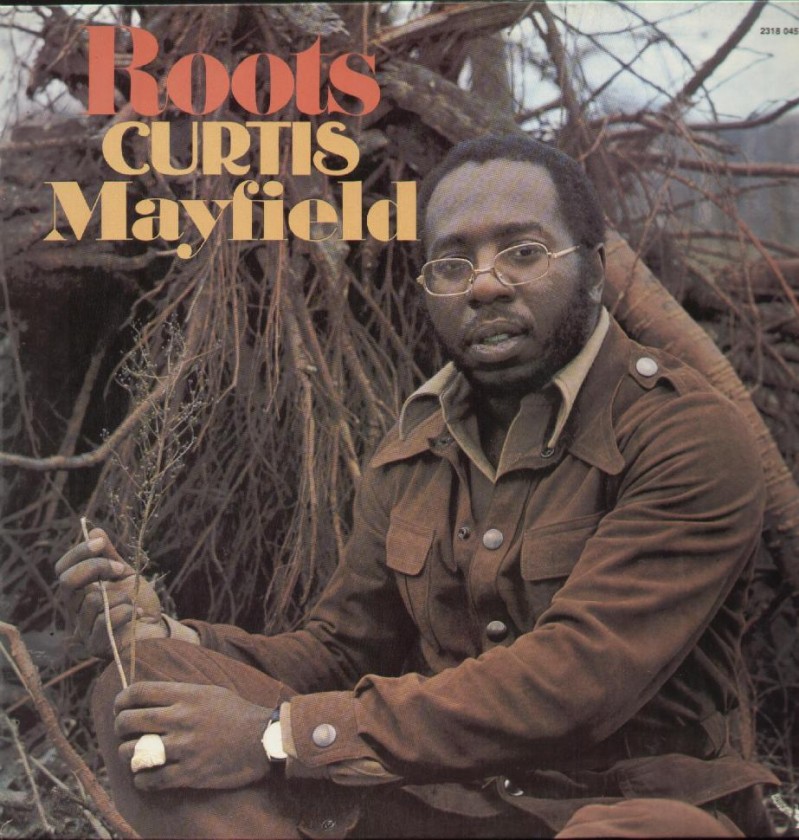April 23: The Rolling Stones released Sticky Fingers in 1971
Continue reading April 23: The Rolling Stones released Sticky Fingers in 1971
Continue reading April 23: The Rolling Stones released Sticky Fingers in 1971
Recorded at the Fillmore East concert hall, the storied rock venue in New York City, on Friday and Saturday March 12, 1971–March 13, 1971, the album showcased the band’s mixture of blues, southern rock, and jazz.
~Wikipediait remains the pinnacle of the Allmans and Southern rock at its most elastic, bluesy, and jazzy.
~Stephen Thomas Erlewine (allmusic.com)“The true brilliance of this live recording is in the shorter pieces. The longer pieces (“Whipping Post,” “You Don’t Love Me,” and “Mountain Jam”) have their moments, but those moments are diluted in the self indulgent noodling typical of many 1970’s live performances. If The Allman Brothers Band: The Fillmore Concerts contained only “Statesboro Blues,” “Stormy Monday” and “One Way Out,” it would still have a place as one of the finest live recordings ever released.
“Statesboro Blues” and “One Way Out” have Duane Allman’s dense and precise slide guitar pitted against Richard Betts’ round lead guitar, with “One Way Out” providing Betts with his finest recorded guitar solo. “Stormy Monday” juxtaposes Allman and Bett’s distinct lead styles in an orgy of perfect blues phrasing. Gregg Allman’s jazzy organ interlude is an added delight.”
~C. Michael Bailey (allaboutjazz.com)
Statesboro Blues (+ Duane Allman tribute video)
Continue reading March 12 and 13: The Allman Brothers played Fillmore East in 1971

“My girlfriend had been killed in a car crash and the only place I could exist was in the studio, Garcia would come every night. The Airplane and the Dead were recording in the same complex… They were all buddies of mine…”
– David Crosby about the recording of his masterpiece (Mojo)
Rolling Stone Magazine put it at number 37 of the “Greatest Stoner Albums” and said:
“Like a super-stoned campfire jam with an A-list of Cali hippie-rockers – including Joni Mitchell and most of the Grateful Dead, Jefferson Airplane, and CSNY – this hazy solo project by the altered-consciousness overachiever sounds like it was pretty much made up on the spot. See the toasted strum-fest “Music Is Love” (with Neil Young on congas!) and “Tamalpais High,” with Jerry Garcia and Jorma Kaukonen noodling around wordless Crosby-Nash harmonies. By the time it’s over, you may not remember your name, either.”
I believe a couple of Santana and Quicksilver Messenger Service members also visited.

David Crosby – Cowboy Movie (Live, Jan 31, 2014) a very fine version! :
It is an album that grows on you, it feels like a mess at first, but it soon starts to make sense. This is a coherent album with wonderful melodies and harmonies. For me it is the quintessential “Laurel Canyon” album, a true classic.
Continue reading Feb 22: David Crosby released If I Could Only Remember My Name in 1971

Roots is Curtis Mayfield’s second studio album, released in October 1971, we don’t know the exact date so we will do the celebration today.
Curtis Mayfield – Keep on keeping on (BBC TV, 1972):
I love Mayfield’s pleading voice and strong songwriting. In a just world this album would be as well-known as Marvin Gaye’s What’s Goin on, it is equally good. It has many similarities with What’s Goin’ on, the long songs (relatively), the far-reaching ambition both lyrically and musically, the heartbreaking and soulful ballads and the sweet voice of a soul legend at his peak.
The music is extremely bold, Curtis Mayfield creates a sound scape that is both complex and simple at the same time.
And you can dance to it!
Curtis Mayfield – Get Down (Soul Train, 1972):
“The music is even bolder than the material on the Curtis album, with Mayfield expanding his instrumental range to the level of a veritable soul orchestra; and the recording is better realized, as Mayfield, with that album and a tour behind him, shows a degree of confidence that only a handful of soul artists of this era could have mustered. “
– Bruce Eder (allmusic)
Curtis Mayfield – Roots on Spotify:
– Hallgeir
Sticky Fingers was never meant to be the title. It’s just what we called it while we were working on it. Usually though, the working titles stick.
~Keith Richards 1971While many hold their next album, Exile On Main St., as their zenith, Sticky Fingers, balancing on the knife edge between the 60s and 70s, remains their most coherent statement.
~Chris Jones (bbc.co.uk)
#1 – Brown Sugar:
Wikipedia:
| Released | 23 April 1971 |
|---|---|
| Recorded | 2–4 December 1969, Muscle Shoals Sound Studio, Sheffield, Alabama; 17 February, March – May, 16 June – 27 July, 17–31 October 1970, and January 1971,Olympic Studios, London, UK; except “Sister Morphine”, begun 22–31 March 1969 |
| Genre | Rock |
| Length | 46:25 |
| Language | English |
| Label | Rolling Stones |
| Producer | Jimmy Miller |
Sticky Fingers is the ninth British and 11th American studio album by English rock band The Rolling Stones, released in April 1971. It is the band’s first album of the 1970s and its first release on the band’s newly formed label, Rolling Stones Records, after having been contracted since 1963 with Decca Records in the UK and London Records in the US. It is also Mick Taylor’s first full-length appearance on a Rolling Stones album, the first Rolling Stones album not to feature any contributions from guitarist and founder Brian Jones and the first one on which Mick Jagger is credited with playing guitar.
The album is often regarded as one of the Stones’ best, containing songs such as the chart-topping “Brown Sugar” and the folk-influenced “Wild Horses”, and achieving triple platinum certification in the US.
#3 – Wild Horses:
During the tour of the States we went to Alabama and played at the Muscle Shoals Studio. That was a fantastic week. We cut some great tracks, which appeared on Sticky Fingers – You Gotta Move, Brown Sugar and Wild Horses – and we did them without Jimmy Miller, which was equally amazing. It worked very well: it’s one of Keith’s things to go in and record while you’re in the middle of a tour and your playing is in good shape. The Muscle Shoals Studio was very special, though – a great studio to work in, a very hip studio, where the drums were on a riser high up in the air, plus you wanted to be there because of all the guys who had worked in the same studio.
~Charlie Watts in 2003
Recording:
Although sessions for Sticky Fingers began in earnest in March 1970, The Rolling Stones had recorded at Muscle Shoals Studios in Alabama in December 1969 and “Sister Morphine”, cut during Let It Bleed’s sessions earlier in March of that year, was held over for this release. Much of the recording for Sticky Fingers was made with The Rolling Stones’ mobile studio unit in Stargroves during the summer and autumn of 1970. Early versions of songs that would appear on Exile on Main St. were also rehearsed during these sessions.
#9 – Dead Flowers:
To my mind the things that Ry (Cooder) plays on have a kind of polish that the Stones generally began to develop around that time. The rough edges came off a bit. Mick Taylor started putting on the polish that became the next period of the Stones out of the raw rock and blues band.
~Jimmy Miller in 1979
In 2003, Sticky Fingers was listed as #63 on Rolling Stone magazine’s 500 Greatest Albums of All Time.
Track Listing:
Personnel:
We made (tracks) with just Mick Taylor, which are very good and everyone loves, where Keith wasn’t there for whatever reasons… People don’t know that Keith wasn’t there making it. All the stuff like Moonlight Mile, Sway. These tracks are a bit obscure, but they are liked by people that like the Rolling Stones. It’s me and (Mick Taylor) playing off each other – another feeling completely, because he’s following my vocal lines and then extemporizing on them during the solos.
~Mick Jagger in 1995
Spotify playlist of the day:
Continue reading Today: The Rolling Stones released Sticky Fingers in 1971 – 42 years ago